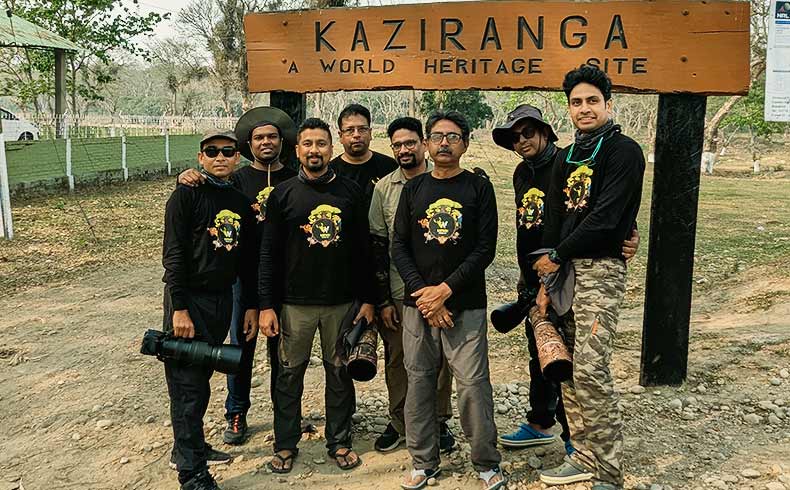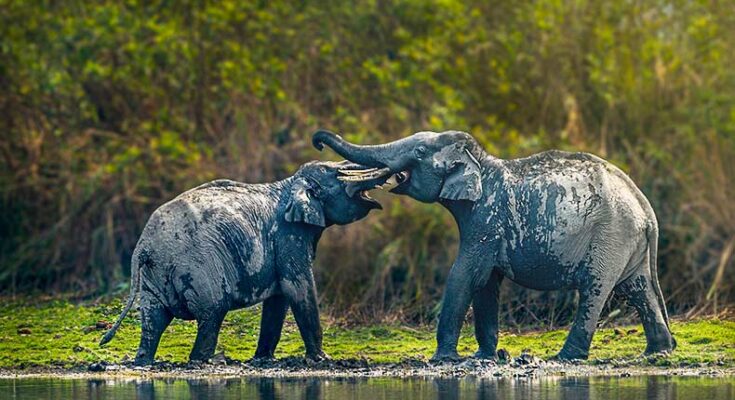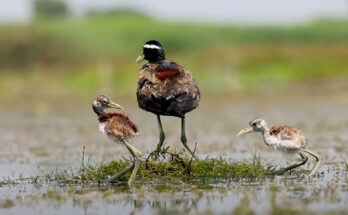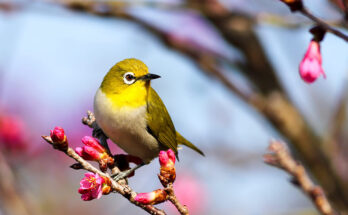A Wildlife Tour at Kaziranga National Park, Assam, India. Image Courtesy – Wild Lancer
Kaziranga National Park, located in the northeastern part of India in Assam, is one of the most biodiverse parks on the planet and a UNESCO World Heritage Site. Covering an area of 430 square kilometres, it borders Arunachal Pradesh and offers a rich variety of flora and fauna.
Key Features of Kaziranga National Park – Zonation for Visitors
The park is divided into four zones for visitors:
Central Zone
Western Zone
Eastern Zone
Burapahar Zone
Visitors can explore these zones using gypsies (jeeps) or by booking an elephant safari, allowing them to experience the park’s diverse ecosystems and wildlife up close.
Landscape:
The park’s landscape includes exposed sand bars, lakes, and elevated regions known as chapories. These chapories provide shelter for animals during the annual floods.
The western reaches of the park are characterized by grasslands surrounding wetlands, due to the lower altitude.
Tall elephant grasses dominate the higher grounds, offering a unique habitat for various species.
A Wildlife Videography & Photography made by Wild Lancer. Video Courtesy – Wild Lancer
Biodiversity:
Kaziranga is renowned for its significant population of the Indian one-horned rhinoceros.
It is also home to tigers, elephants, wild water buffalo, and various species of deer and birds.
The park supports rich birdlife, including several endangered and migratory species, making it a haven for birdwatchers.
Conservation Efforts:
The park plays a crucial role in wildlife conservation and is a major success story in preserving the one-horned rhinoceros.
Efforts include anti-poaching measures, habitat management, and community engagement to ensure the protection of its diverse species.
Visiting Kaziranga:
Gypsy Safaris – These are open jeep safaris that allow visitors to explore different zones of the park. They offer flexibility and the chance to cover more ground.
Elephant Safaris – These provide a unique vantage point to observe wildlife, especially in the grasslands where elephants can navigate more easily.
Kaziranga National Park’s combination of rich biodiversity, diverse landscapes, and effective conservation efforts makes it a must-visit destination for nature enthusiasts and wildlife lovers.
Kaziranga National Park offers visitors the chance to witness an array of magnificent wildlife, famously known as the “Big 5” of Kaziranga:
Indian One-Horned Rhinoceros – Kaziranga is home to the largest population of the Indian one-horned rhinoceros, a species that symbolizes the park’s successful conservation efforts.
Wild Water Buffaloes – The park also boasts a significant population of wild water buffaloes, known for their impressive horns and crucial role in maintaining the ecosystem.
Asian Elephants – Herds of Asian elephants roam freely in the park, contributing to the dynamic and diverse wildlife experience.
Royal Bengal Tigers – Kaziranga has the highest density of tigers in the world, with a density of one tiger per five square kilometres. Despite this high density, sightings can be rare due to the tall elephant grass that provides excellent camouflage for these elusive predators.
Eastern Swamp Deer – Also known as the barasingha, the Eastern swamp deer is another prominent resident of Kaziranga, adding to the rich tapestry of wildlife.
Read: Behold wildlife through the lenses of Wild Lancer

A group picture of the Wild Lancer team. Image Courtesy – Wild Lancer
Unique Wildlife Experience
Photography Opportunities – Kaziranga is a paradise for photographers, offering countless opportunities to capture stunning images of its wildlife and landscapes. The thrill of seeing the Big 5 and other animals will fill your heart with joy and your camera’s memory cards with unforgettable moments.
Golden Tiger – If you are incredibly fortunate, you might witness the rare Golden Tiger, a unique and beautiful variant of the Royal Bengal Tiger, which is found exclusively in Kaziranga.
Ecological Importance
Habitat Diversity – The park’s varied habitats, including grasslands, wetlands, and forests, support a wide range of species and contribute to its exceptional biodiversity.
Conservation Success – Kaziranga’s robust conservation programs and strict anti-poaching measures have made it a model for wildlife protection and management.
There is a significant population of herbivores like Gaur, Sambar, Chital, Boar, Hog Deer etc.
You can find some other mammals like Leopards, Indian Grey Mongoose, Indian Civets, Bengal Foxes, Sloth beer, Bengal Fox, Hog Badger, Flying Squirrels, and Hoolock Gibbon. Kaziranga is also a large bird area for a variety of local and migratory birds.
The park experiences three seasons – summer, monsoon and winter. Wild animals face most of the challenges during the rainy season as in the peak months of July, and August the park gets submerged with the rising water level of Brahmaputra, the wild animals usually take shelter in the elevated region of the park. During that time wild and human conflicts happen as the elevated area is very near to human settlement.
The Forest Department has been doing a phenomenal job for the last few decades in anti-pooching activities, controlling burning to avoid forest fires, in controlling weeds.
Visiting Kaziranga National Park provides a unique and enriching experience, where the beauty and diversity of nature can be appreciated in one of the world’s most biodiverse and well-preserved environments. Whether you are a wildlife enthusiast, a photographer, or simply a nature lover, Kaziranga promises an unforgettable adventure.





